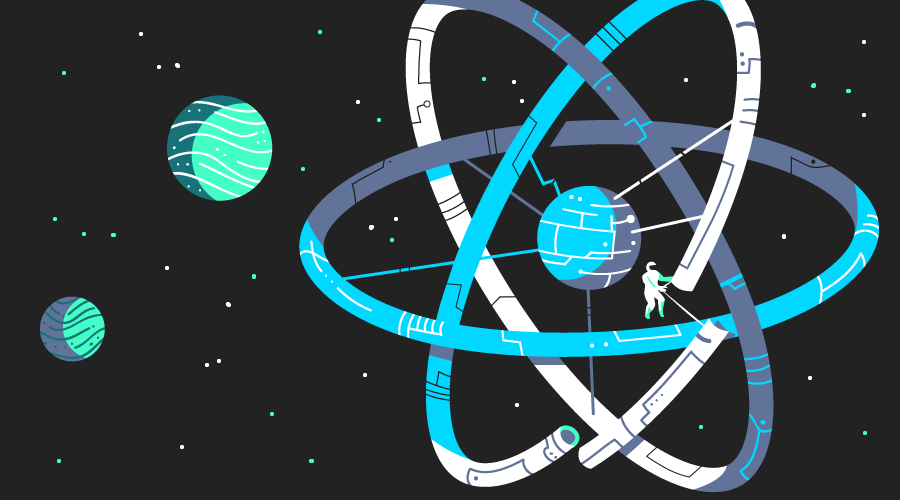You might also like...
Nunc fringilla turpis tincidunt purus malesuada, vel faucibus mauris finibus.
Nunc fringilla turpis tincidunt purus malesuada, vel faucibus mauris finibus.
Let's learn React
13 June 2022 6 min read

Lesson 2 - react
Usage
React's core usage is as a UI rendering layer (the V in MVC). It is (mostly) not concerned with data storage (ie; the M), or the application logic (ie; the C).
Given this specialty, React takes full control over the UI in the browser, down to the point that you no longer specify the exact markup (HTML) that gets rendered, but instead a hierarchy of elements. React then handles mounting the root element of the hierarchy into the browser DOM for you.
At its simplest, this is what it looks like to mount (aka: render) a single
element at a particular point in the page (the #app DOM node) using
Javascript:
This creates an element that is a <span> tag with the contents 'Hello, world!'. Then renders it into the DOM node #app.
The output would be similar to:
Let's go and edit the file we need to have this work:
But where did these variables React & ReactDOM come from? We need to add
them to our page via some script tags. Update lib/index.html to be:
Refresh your page in the browser, and we should now see: "Hello, react!".
React DevTools
If you open Chrome's DevTools Console, you'll see a helpful message about installing the React DevTools, but more importantly that we should "use an HTTP server (instead of a file: URL)"
Let's install a HTTP server quickly now. In the terminal, run this command:
npm install --save-dev http-server
You'll notice this has added a new line to your package.json, something like:
"http-server": "^0.9.0"
We want to be able to easily execute the http-server, so let's add a run
script to our package.json. We'll do that by replacing the line that starts
with "test": "...", with the following:
"start": "http-server lib"
To test everything works, let's run that new script we created in our terminal:
npm start
Now if you visit the URL it gives you (http://127.0.0.1:8080), you should see your app running again.
From now on, each time we make a change to our code, we will stop (<Ctrl-C>)
that http-server, and start it again with npm start, then refresh our page in
the browser.
Add our changes to git
Before you add our changes, we want to ignore the node_modules folder, since
we don't want that in git.
Create a new file .gitignore in your project's folder (note: don't forget the
. in the filename!):
.gitignore
node_modules
Now we can add and commit our files:
git add .
git commit -m "Lesson 2"
Congratulations, you're now a React expert! Haha, no. I lied. There's still loads more awesomeness to go. Onward to Lesson 3!
Lesson 1 - setup « | Home | » Lesson 3 - components
TOC
- Home
- [Lesson 1 - setup]
- Lesson 2 - react
- [Lesson 3 - components]
- [Lesson 4 - modules]
- [Lesson 5 - jsx]
- [Lesson 6 - props]
- [Lesson 7 - state]
- [Lesson 8 - children]
- [Lesson 9 - reusability]
Recent Posts
What's on My iPhone?
May 9, 2019
Is Chromebook Still a Thing?
May 9, 2019
Do You Need an Apple TV?
May 9, 2019





